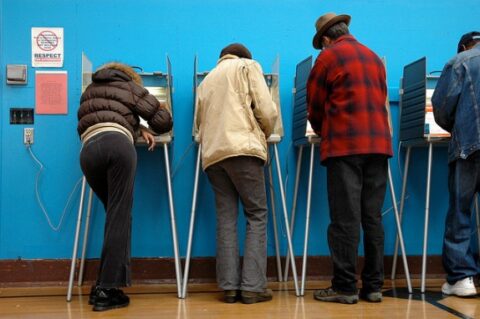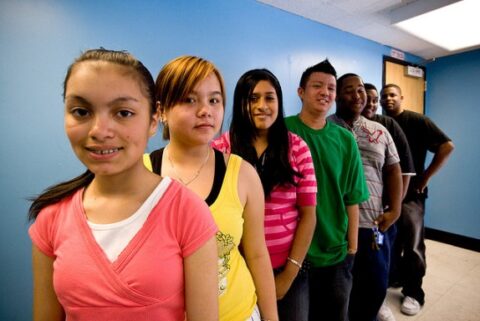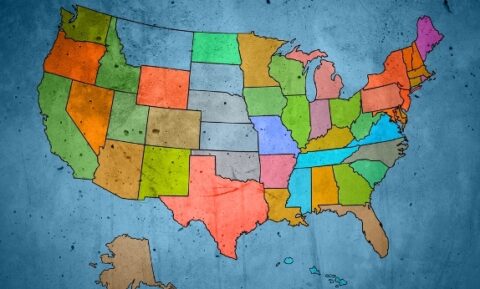Demographics

The Coming Wave of Second-Generation Voters
The Latino vote is widely discussed at election time, yet little analysis is dedicated to the “immigrant vote,” and even less to the growing bloc of voters who are the U.S.-born children of immigrants. Yet, both immigrants and their children are showing tremendous growth and voting potential. Although many second-generation Americans are still children, more and more of them will come of voting age in future elections. As that happens, political candidates will be forced to take notice. Read More

Number of Potential Immigrant Voters on the Rise in Key Super Tuesday States
Three of the twelve states holding Republican primaries or caucuses on Super Tuesday—Georgia, Massachusetts and Virginia—show especially strong trends in the numbers of foreign-born residents who have become U.S. citizens. This trend is significant given that these new Americans are able to register and vote. Immigrant communities in each of these states are large, exceeding 800,000 persons, and make up almost 10% or more of the statewide population. In fact, these three states are home to 71% of all immigrants living in the Super Tuesday states. While we don’t yet know how many of these naturalized U.S. citizens will vote on Super Tuesday or in the general election, GOP presidential candidates—many of whom have taken a hard line on immigration—would do well to take note of this trend. Read More

Number of Potential Immigrant Voters on the Rise in Key Super Tuesday States
Three of the twelve states holding Republican primaries or caucuses on Super Tuesday—Georgia, Massachusetts and Virginia—show especially strong trends in the numbers of foreign-born residents who have become U.S. citizens. This trend is significant given that these new Americans are able to register and vote. Immigrant communities in each of these states are large, exceeding 800,000 persons, and make up almost 10% or more of the statewide population. In fact, these three states are home to 71% of all immigrants living in the Super Tuesday states. While we don’t yet know how many of these naturalized U.S. citizens will vote on Super Tuesday or in the general election, GOP presidential candidates—many of whom have taken a hard line on immigration—would do well to take note of this trend. Read More

New Data Highlights Immigrant Integration and Economic Contributions
A recent analysis of data from the Census Bureau highlights the degree to which immigrants integrate into U.S. society and contribute to the U.S. economy. In its latest statistical profile of the foreign-born population, the Pew Hispanic Center presents statistics which illustrate that most immigrants have been here for more than a decade, more become homeowners the longer they are here, and growing numbers are becoming U.S. citizens. Moreover, the data show the degree to which immigrants fuel labor-force growth and fill valuable roles in the economy as workers in both high-skilled and less-skilled occupations. Read More

A New Way to Measure the Burgeoning Power of the Immigrant Vote
Voter registration is a key measure of immigrant integration. After all, what could be more American than casting your ballot on Election Day? When measuring immigrant voting patterns, voter registration is typically defined as the percent of naturalized immigrants (those who have become U.S. citizens) who are registered to vote. In other words, we only look at those currently eligible to vote because they have naturalized, instead of looking at the percentage of naturalized registered voters against all immigrants, documented or undocumented. The problem with that approach is we miss a big and important picture on the potential of the immigrant voting block—that many of those not eligible now, may well be eligible in the future. Read More

Retiring Baby Boom Generation Will Rely on Immigrant, Hispanic Workforce
The U.S. population is rapidly growing older, which is having a dramatic impact on the U.S. labor force. The far-reaching effects of this demographic transformation are very much apparent in the projections released in January by the Bureau of Labor Statistics (BLS). As explained by Rakesh Kochhar of the Pew Hispanic Center, the BLS numbers indicate that “the aging of the non-Hispanic white population is expected to reduce their numbers in the labor force.” At the same time, “the Hispanic population is growing rapidly due to births and immigration.” For those reasons, says Kochhar, the BLS projections indicate that Latinos “will account for three-quarters of the growth in the nation’s labor force from 2010 to 2020.” Read More

GOP Candidates Ignore Florida’s Diversifying Latino Population
Campaigning in Florida this month, GOP Presidential candidates continued to display a general lack of understanding of the state’s diversifying Latino population. While it’s well-documented that the Cuban-American population is currently a strong political force, the emerging story in Florida is that the state’s future voting population will become increasingly Latino, but less Cuban. Read More

Nativist Group Twists Facts on Effectiveness of Arizona’s Immigration Law
The Federation for American Immigration Reform (FAIR) has outdone itself when it comes to shoddy research. In a recently released report on “demographic changes” in Arizona, FAIR utilizes an almost random assortment of statistics to make its case that the state’s unauthorized immigrants are fleeing in droves thanks to get-tough immigration policies. The report occasionally pays lip service to the impact on unauthorized immigration of the 2008-2009 recession, as well as persistently high unemployment rates that continue to this day. Yet FAIR concludes, without evidence, that state-level immigration enforcement has been the single most important factor causing the decline of the unauthorized population. In reality, this conclusion is not supported by the data which FAIR presents. Read More

Immigrants, Latinos and Asians Contribute More to Your State Than You Think
Immigration has never been a numbers game. When people think of immigration in America, they likely call to mind fear-fueled myths perpetuated by immigration restrictionists, like “immigrants are stealing American jobs” or “immigrants are a drain on our system.” Sadly, numbers and facts have rarely been part of the discussion, especially as state legislatures continue to take immigration law into their own hands. Today, however, the Immigration Policy Center published 50 state fact sheets updated to show just how much immigrants, Latinos and Asians contribute to our country as consumers, taxpayers, workers, entrepreneurs and voters—facts state legislators would do well to consider before passing legislation that drives immigrants, undocumented and documented, from their state. Read More
Make a contribution
Make a direct impact on the lives of immigrants.
